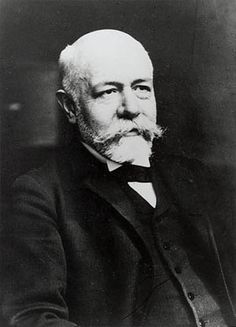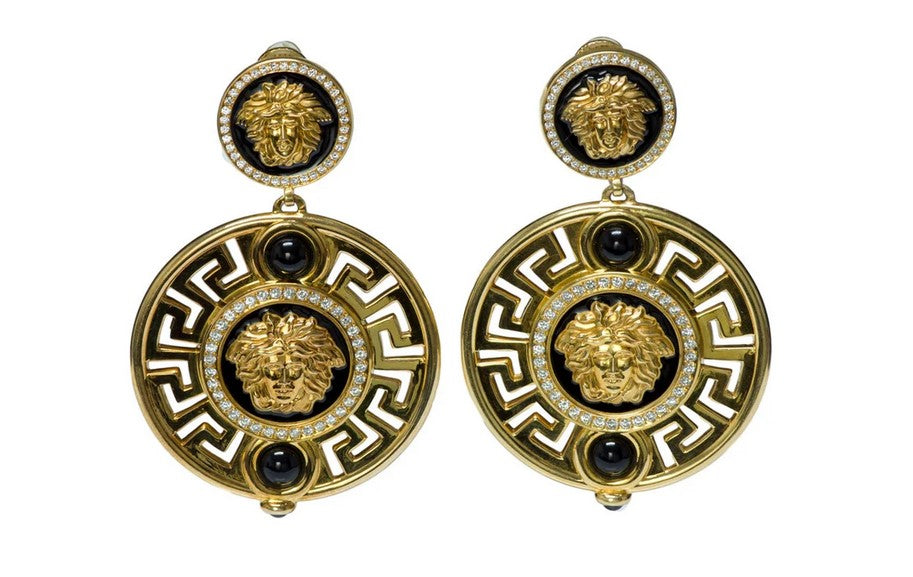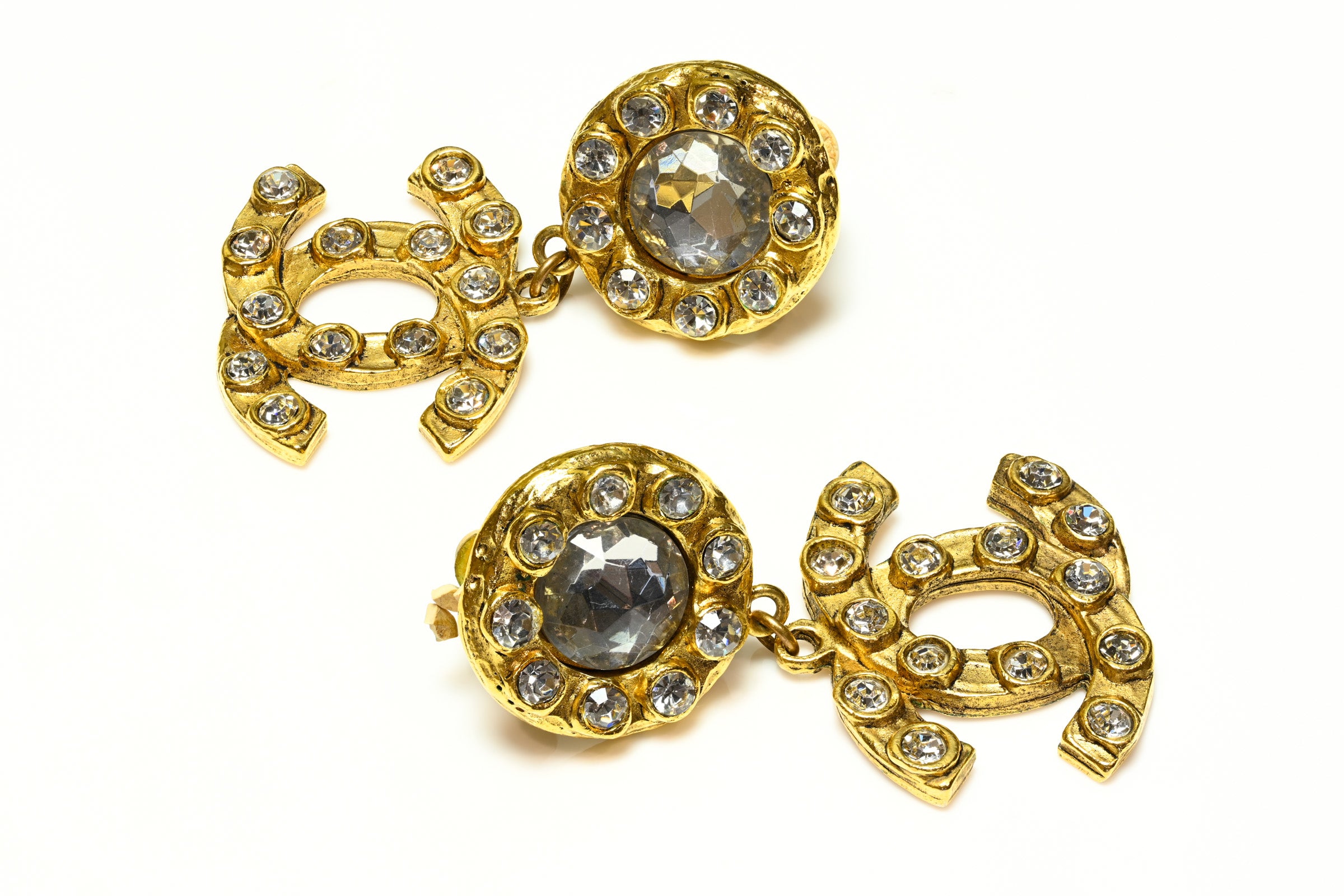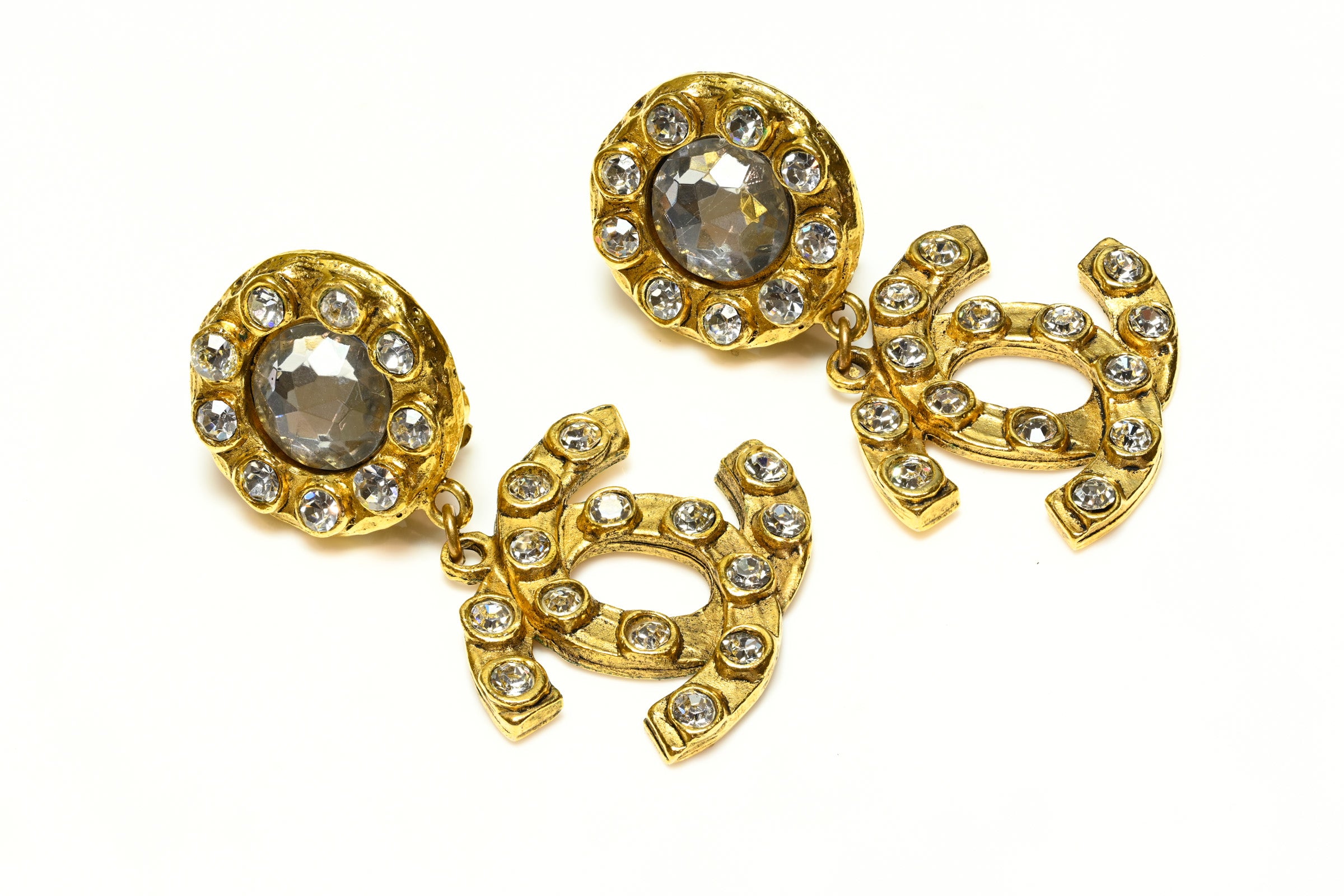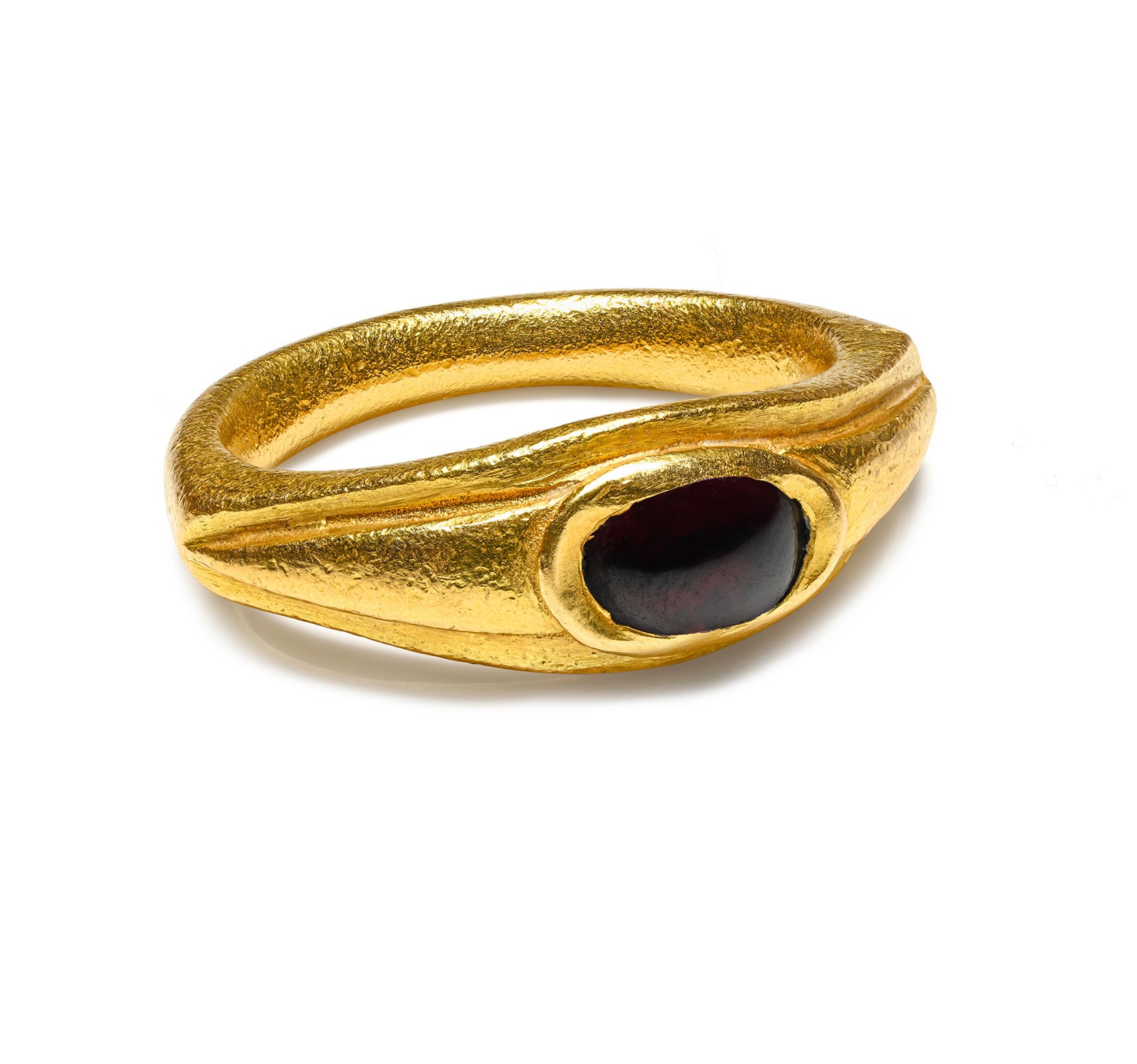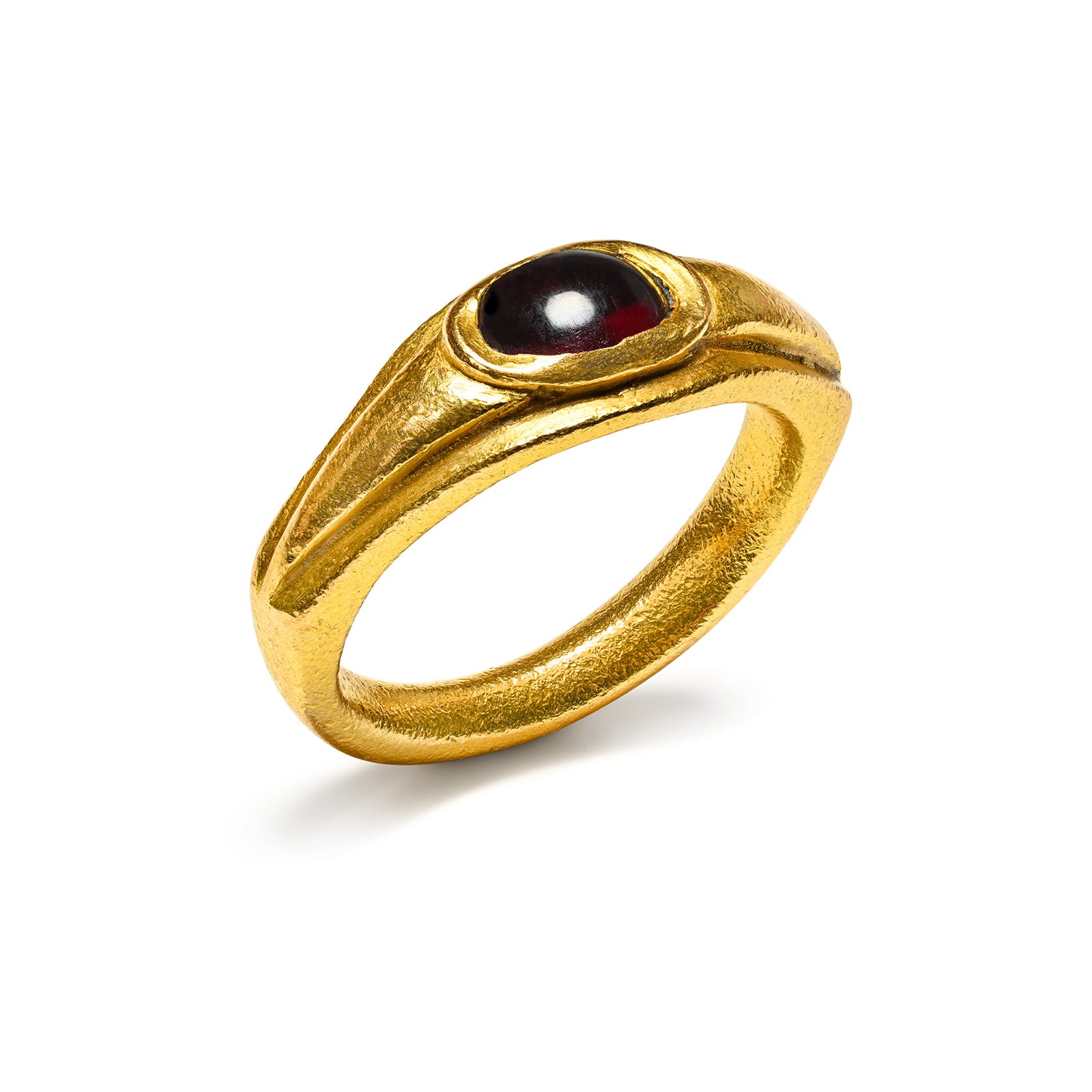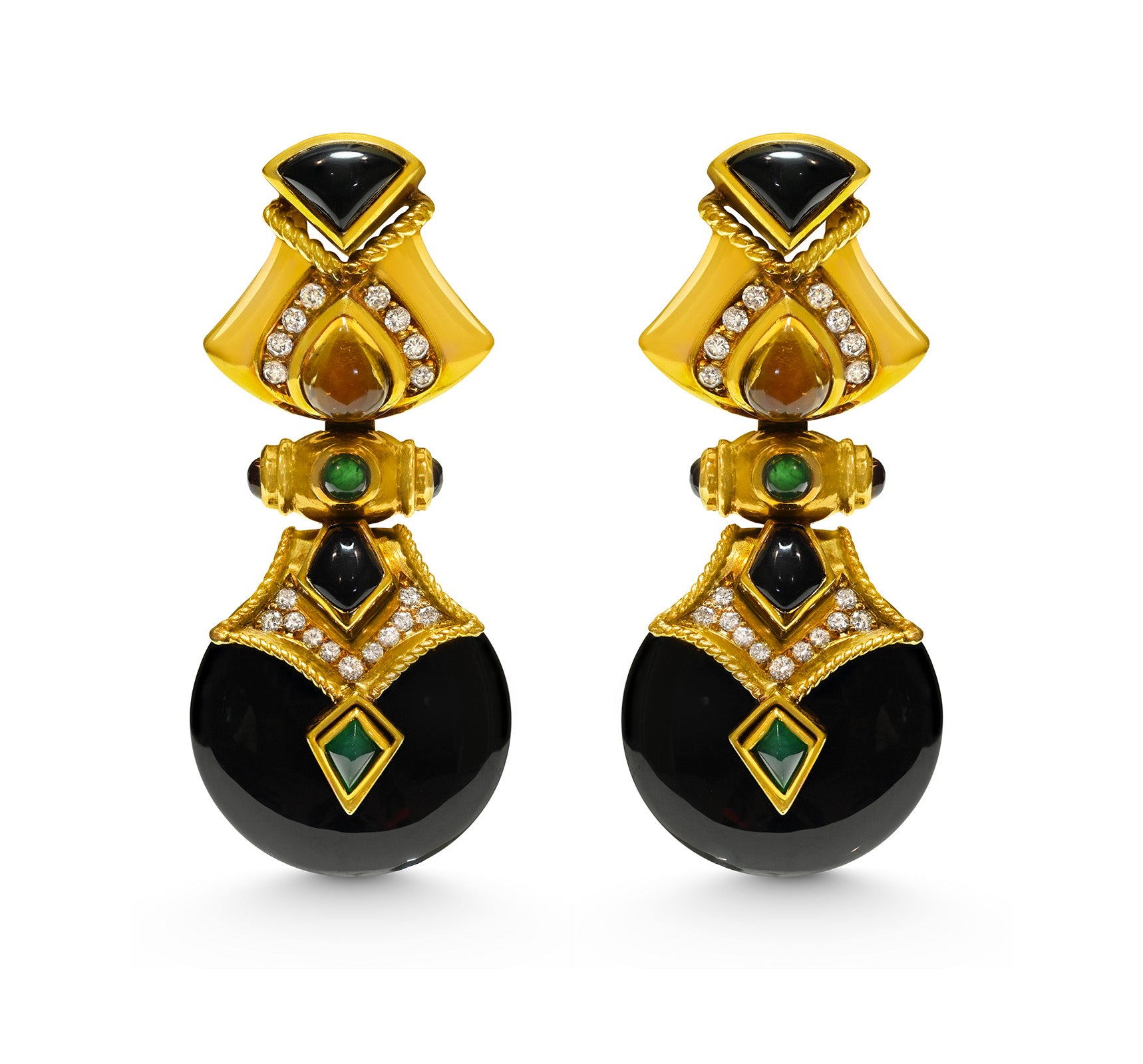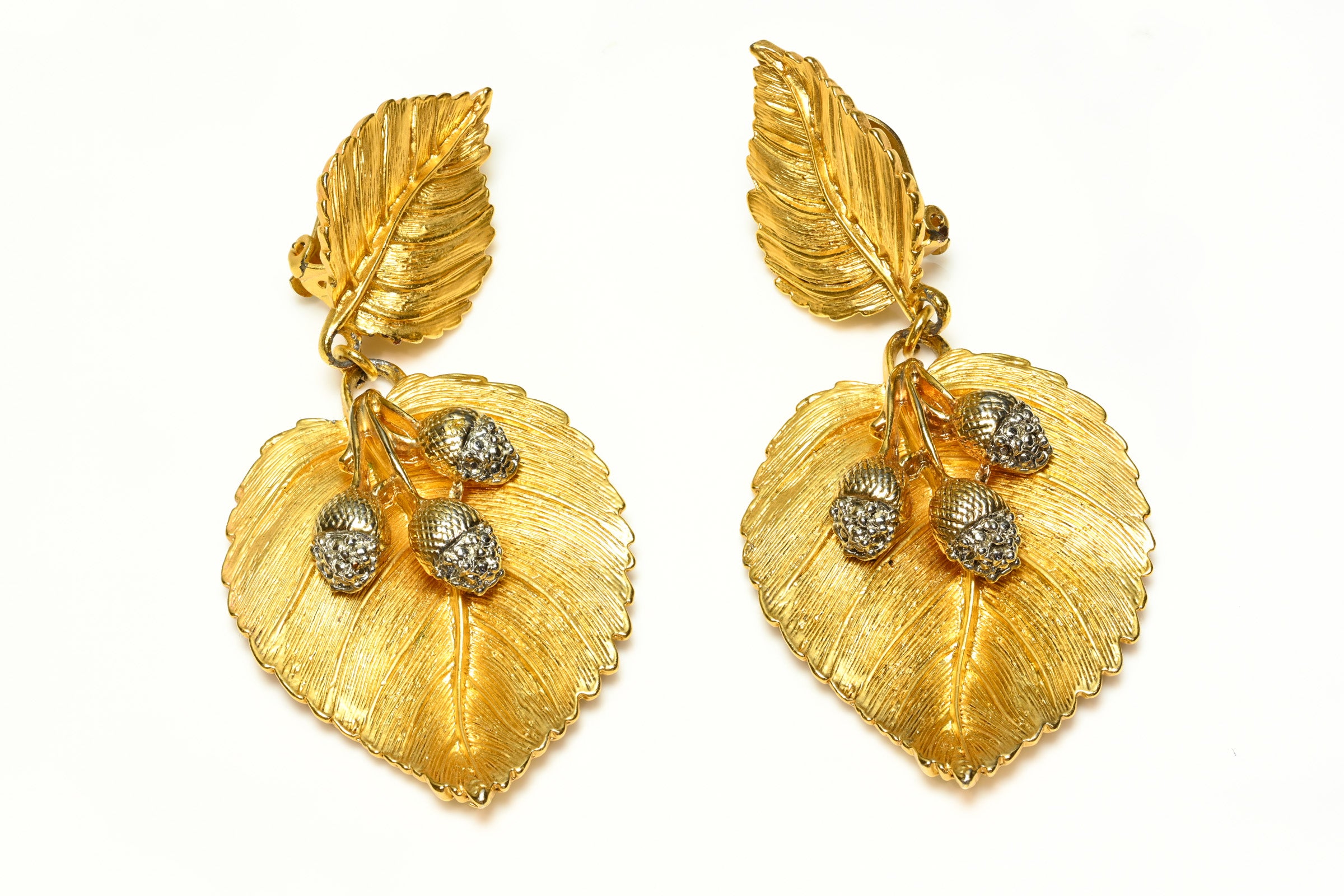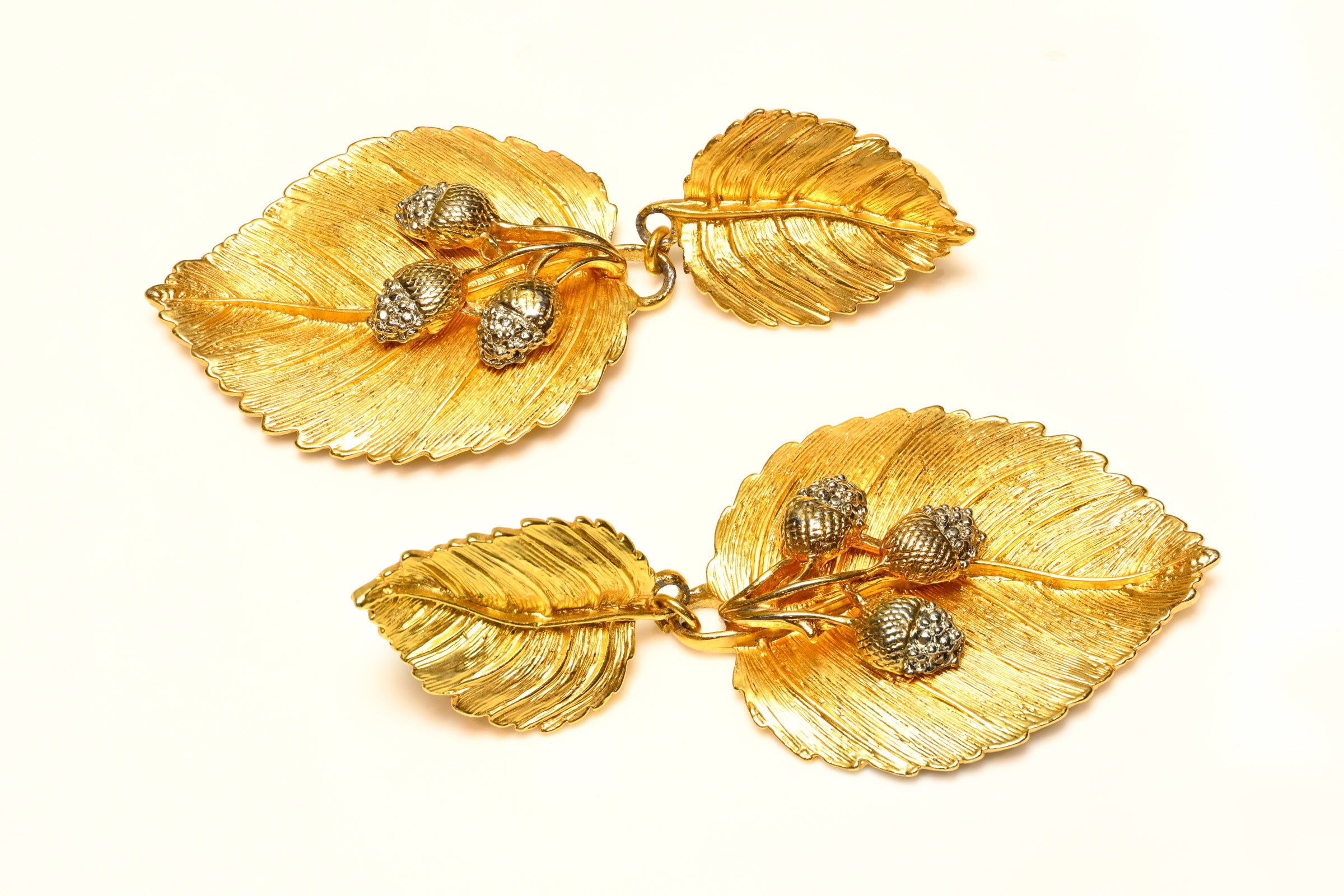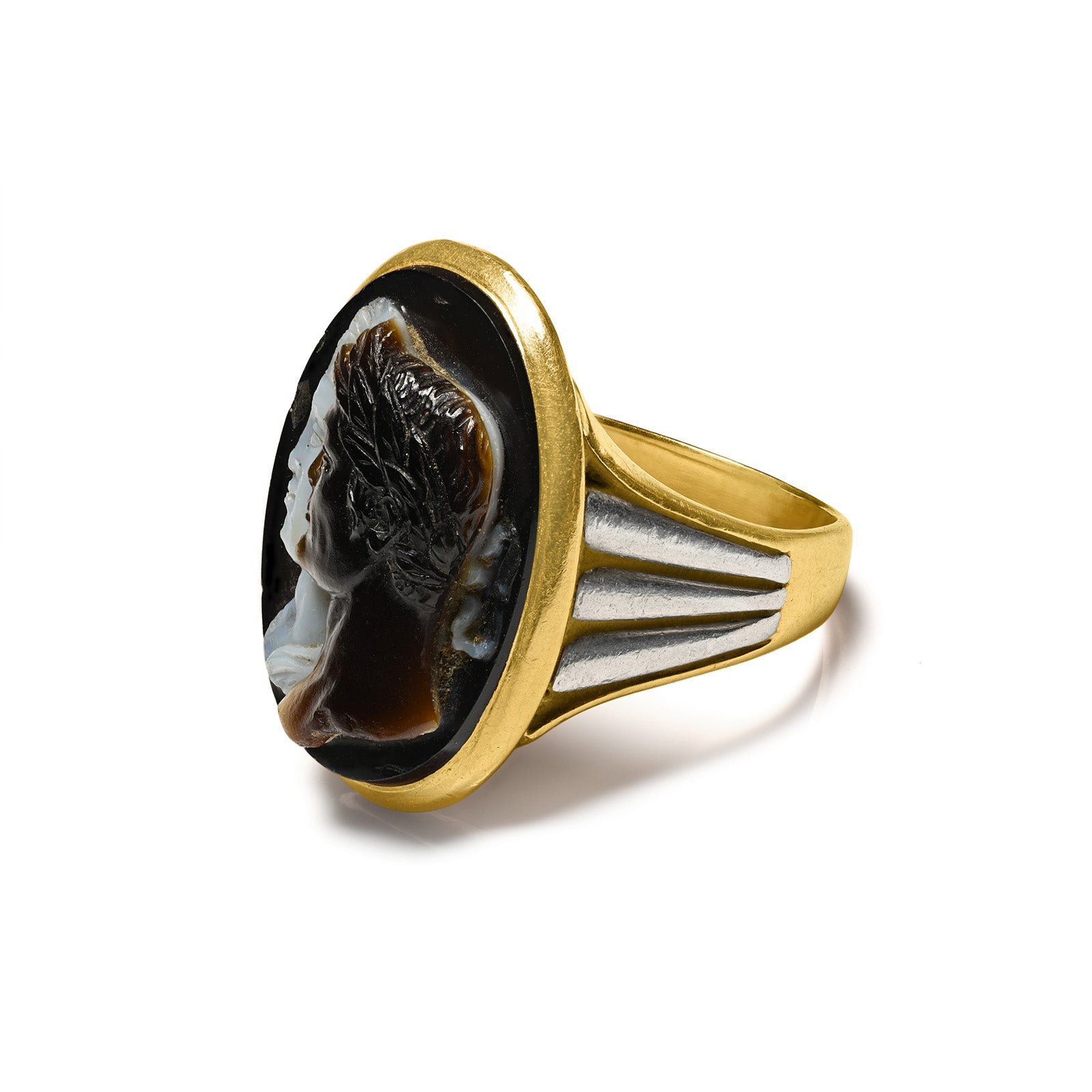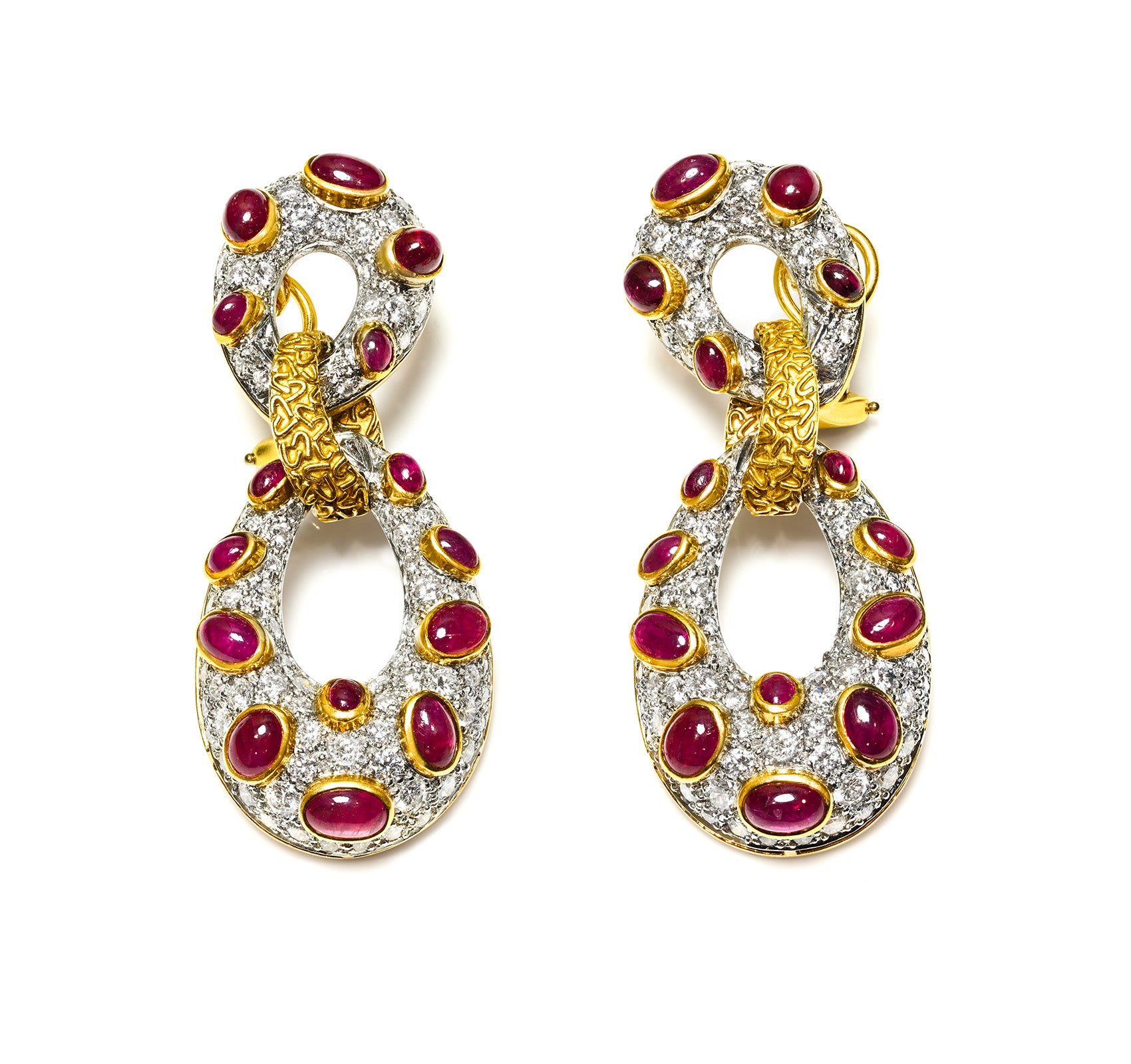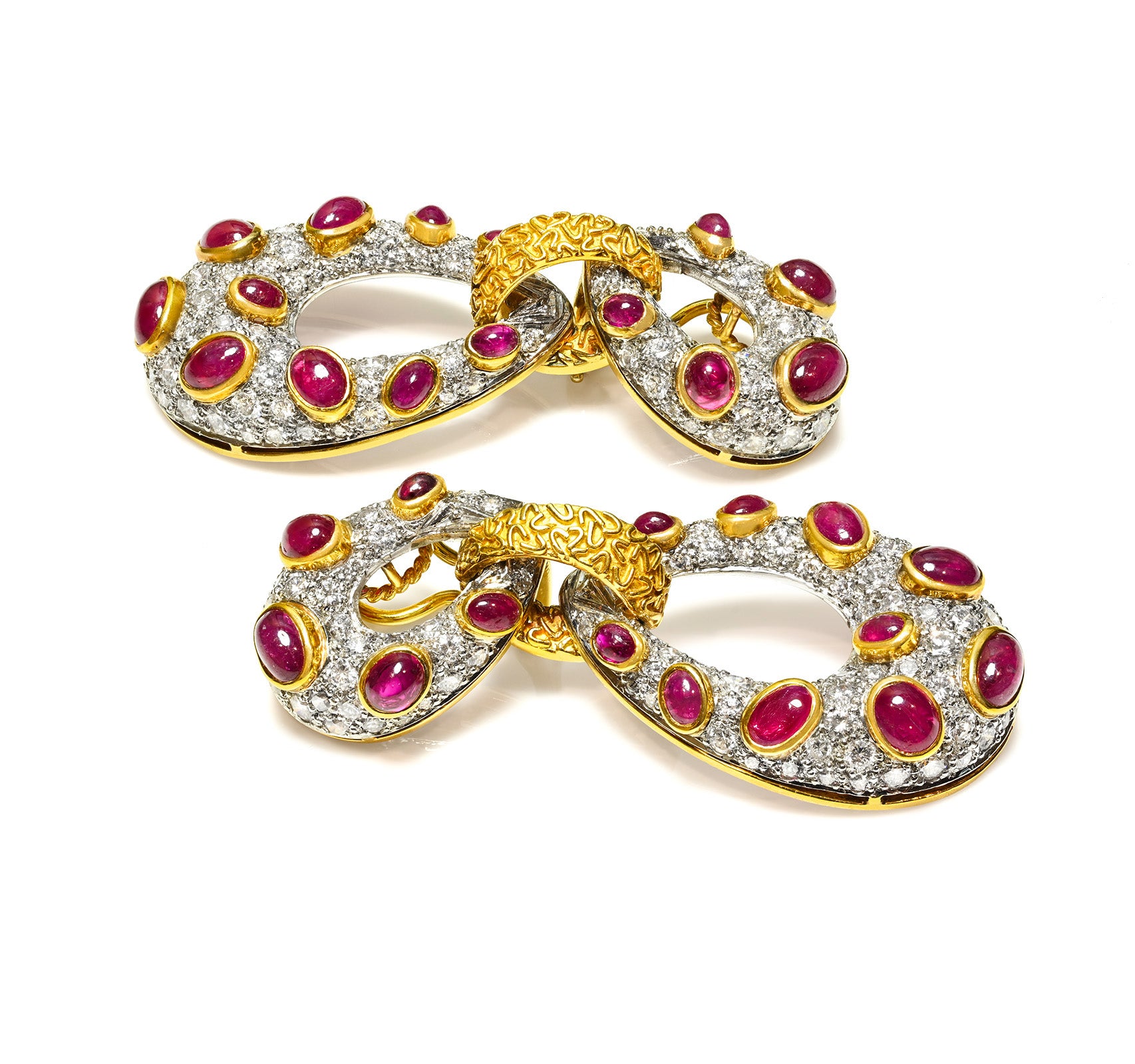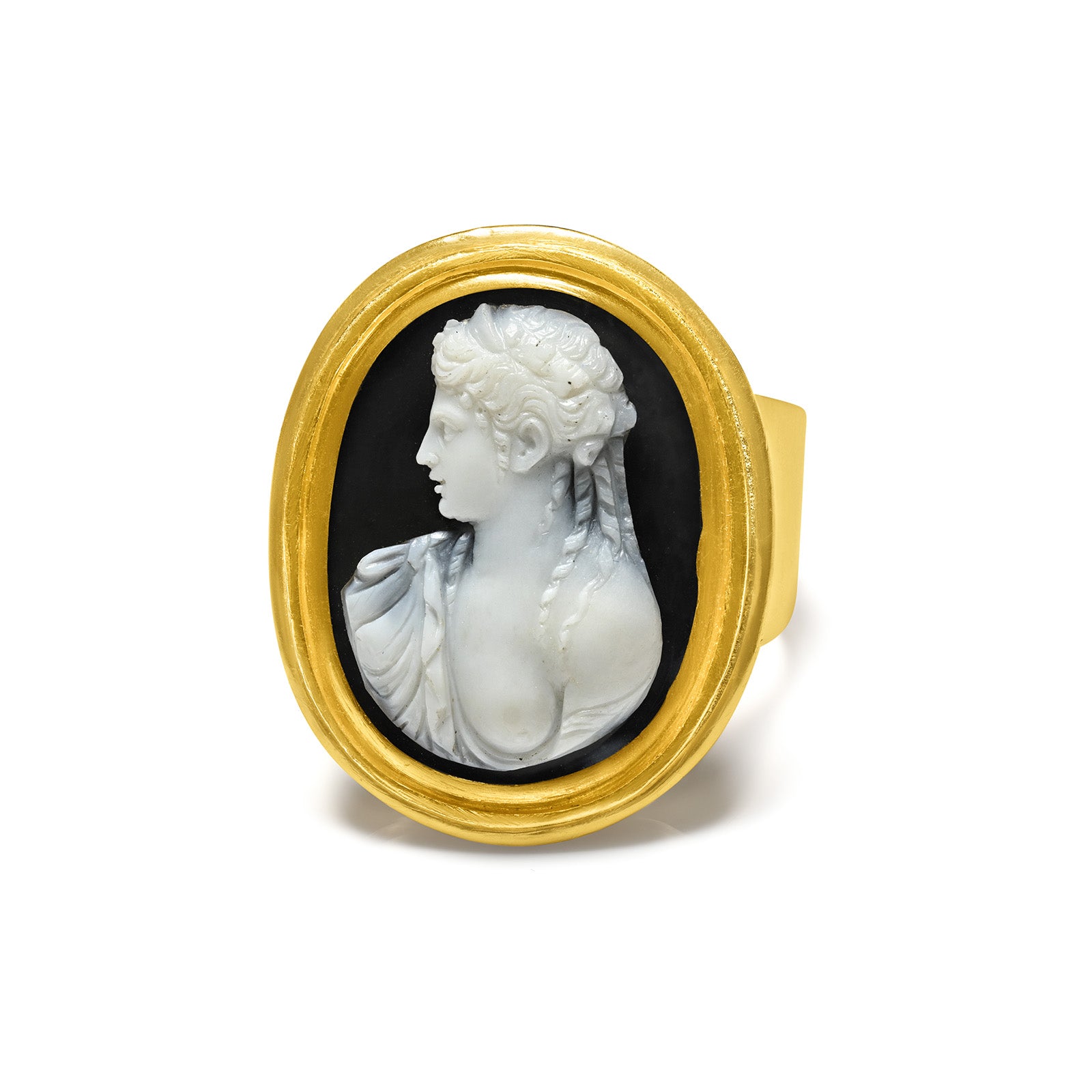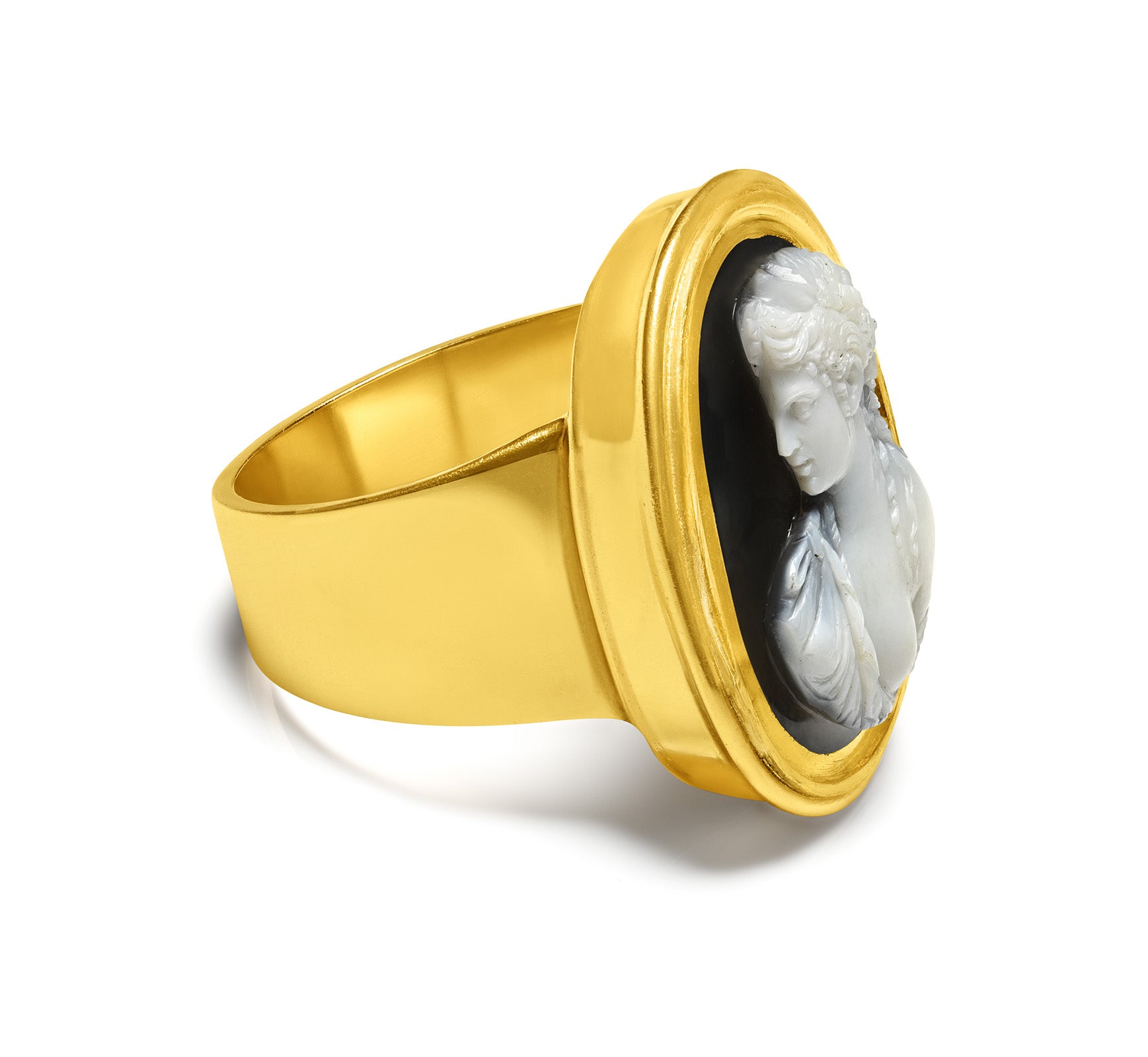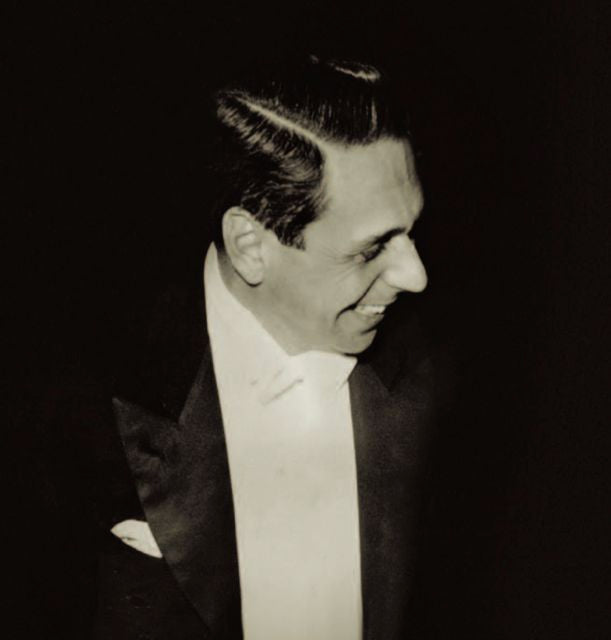
The Captivating Story of Fulco di Verdura: America's Crown Jeweler
Fulco Santostefano della Cerda, Duke of Verdura, was a prominent Italian jeweler and one of the most celebrated names in the jewelry industry.
Known as "America's Crown Jeweler" or simply Fulco di Verdura, his legacy endures in the remarkable body of work he left behind. To own a piece by Verdura is to hold a fragment of history in your hands.
By the time of his retirement in the 1970s, Fulco di Verdura had firmly established himself as a contemporary classic. His persona, rooted in aristocratic charm, evoked a bygone era—a nobleman of the 19th century in spirit, yet an American icon in the jewelry world.
From the mid-20th century onward, Verdura’s neo-Baroque masterpieces became coveted status symbols among Park Avenue elites, Hollywood stars, and European aristocracy.

Fulco di Verdura's Notable Clients
Verdura’s jewelry catered to a select clientele by appointment only. Among his devoted admirers were:
- Wallis Simpson, the Duchess of Windsor
- Diana Vreeland, legendary fashion editor
- Marlene Dietrich, who famously wore Verdura’s Maltese Cross cuffs as a daily staple
The Duke was the last to hold the Duke of Verdura title, which is now defunct in Sicily.

Fulco di Verdura - Origins
Born in Palermo, Italy, in 1898 to Giulio Santostefano della Cerda and Carolina Valguarnera dei principi di Niscemi, Fulco grew up in an aristocratic world reminiscent of the 18th century.
His upbringing instilled in him a vibrant imagination, a keen sense of humor, and a deep love for animals—all of which would later inspire his jewelry designs.
His memoir, The Happy Summer Days, vividly recounts his joyful childhood at the Villa Niscemi, the family’s opulent 18th-century estate. Surrounded by art and nature, Fulco developed a lifelong appreciation for both, which became central to his creative vision.
In 1916, Fulco joined the army and quickly rose through the ranks. However, a severe shoulder injury ended his military career prematurely. Returning to Palermo, Fulco immersed himself in the lively social scene of post-war Europe. Palermo, once again a hub for European royalty and American glitterati, became the backdrop for his formative years.
After his father’s death in 1923, Fulco inherited the title of Duke of Verdura. Financial constraints forced him to seek a career that matched his aristocratic status and could support his love of travel and art.
Chanel Years
Fulco di Verdura’s journey toward his life’s purpose began in 1919, when he met his early patrons and lifelong friends, Linda and Cole Porter, in Palermo. In 1925, during a party hosted by the Porters in Venice, Linda introduced Fulco to Gabrielle “Coco” Chanel.
By 1927, Fulco was hired by Chanel as a textile designer, but his extraordinary talent soon became evident. Chanel tasked him with reimagining the settings of her jewelry, which included gifts from notable admirers such as Grand Duke Dmitri Pavlovich of Russia, Bendor Grosvenor, and the Duke of Westminster.
Impressed by his artistic vision, Chanel appointed Fulco di Verdura as the head designer of Chanel jewelry. Over the next eight years, Fulco built a reputation for creating bold and imaginative designs, blending artistic sophistication with daring creativity.

The Maltese Cross Cuffs
One of Fulco di Verdura’s earliest assignments for Gabrielle “Coco” Chanel was to reimagine her personal jewelry collection. This task marked the beginning of a deep and creative bond between the two, often characterized by their shared love for artistic exploration and inspiration.
To spark creativity, Fulco took Chanel on tours of historic jewelry collections, including the Augustus the Strong and Charlemagne collections in Dresden, and the Renaissance jewelry housed in the Treasury of the Munich Residence.
During their Italian travels, they visited the Basilica of San Vitale in Ravenna, where the Byzantine mosaics of Empress Theodora left a lasting impression.
Drawing from these experiences, Fulco di Verdura designed the first Maltese Cross pieces—two gold brooches adorned with slightly misaligned, multicolored semiprecious stones. The gem collage evoked the historical jewelry they admired but had no direct precedent in the jewelry designs of the 1930s.
The Maltese cross shape, also called the Amalfi cross, was a loose interpretation of the star of the Knights of Malta. The cross held personal significance for Fulco di Verdura, tying back to his Sicilian roots near the Amalfi Coast and the Island of Malta, which served as a pivotal base during the First Crusades.
Chanel’s Maltese Cross Bracelets
For Chanel’s private collection, Fulco di Verdura designed a pair of white enamel bracelets featuring Maltese crosses. Each cross was set with a unique arrangement of stones, reflecting a playful disregard for traditional distinctions between fine and costume jewelry.
The bracelets were crafted from a base silver alloy, embodying the design duo’s relaxed attitude toward blending materials.
Since their creation in the early 1930s, Verdura's Maltese Cross Cuffs have undergone numerous iterations. While the materials evolved—later versions featured white or black jade cuffs—the original spirit of creativity remained intact.
In 2014, to celebrate Verdura's 75th anniversary, the company introduced the Theodora Cuffs, a luxurious reinterpretation of the iconic design, named in homage to the Byzantine empress who inspired the original pieces.
The Flato Years
In 1934, Fulco di Verdura left Chanel and embarked on a new adventure in the United States, traveling with Princess Natalia Pavlovna Paley and Baron Nicolas de Gunzburg.
After a brief visit to Hollywood, Fulco settled in New York, where he was introduced to jeweler Paul Flato by Chanel client Diana Vreeland.
Fulco joined Flato's design team full-time when the jeweler opened a boutique in Hollywood. Together, they created dazzling high jewelry that became the hallmark of "Verdura for Flato."
Flato di Verdura’s jewelry found its way into the wardrobes of East Coast socialites and Hollywood movie stars, appearing prominently in films.
At the time, the Flato name achieved more on-screen appearances than any other jeweler, thanks in no small part to Fulco's innovative designs.
Verdura LLC: The Birth of a Jewelry Icon
In 1939, with the encouragement of his close friends Vincent Astor and Cole Porter, Fulco di Verdura opened his own jewelry salon, Verdura LLC, at 712 Fifth Avenue in New York City. He also brought on Joseph Mann and Joseph Alfano, former colleagues from Flato, to join him in this new venture.
This move was bold, as it was unconventional for a gentleman of Fulco di Verdura's aristocratic stature to enter the realm of "trade." At the time, it was uncommon for social elites to interact closely with designers, even those who influenced the cultural zeitgeist.
Yet, Fulco quickly became a "crown jeweler" to America's elite, crafting unique pieces for prominent families such as the Whitneys and the Astors. His meticulously preserved ledgers document these exclusive commissions.

A Jewel in New York's Café Society
Fulco di Verdura seamlessly integrated into New York’s emerging and glamorous café society, a world of socialites, artists, business magnates, and celebrities who lived as extravagantly as movie stars.
This eclectic group frequented elite venues like the Colony, "21", and El Morocco, where opulence and decadence were the norm.
Fulco di Verdura catered to this vibrant community by designing rings, brooches, compacts, and cigarette boxes that added flair to their couture ensembles. His jewelry became an essential part of self-expression, helping his clients craft their public personas with imagination and style.
Sicilian Inspiration in Design
Fulco drew heavily from his Sicilian heritage for creative inspiration. His childhood fascination with Renaissance art, sparked by an illustrated book on Raphael, profoundly influenced his work. This blend of art and nature permeated his designs for Verdura, resulting in creations that were both whimsical and elegant.
Notable themes in his designs:
- Pomegranates crafted from ruby seeds
- Gold corncobs with black pearl kernels
- Artichokes featuring emerald petals
- Leaf-shaped brooches adorned with colored zircons
These pieces reflected Fulco’s unrestrained creativity, blending natural motifs with intricate craftsmanship.
Distinctive Style and Popularity
Fulco’s designs rejected traditional constraints, embracing a freedom that mirrored his personality. His charisma, quick wit, and aristocratic allure made him as celebrated as the jewelry he crafted.
Fulco di Verdura became a fixture of both New York and Hollywood high society, forging close friendships with many of his affluent and glamorous clients.
Unlike other jewelers of his time, Fulco di Verdura rarely repeated designs. His commissions were one-of-a-kind, carefully tailored to suit the client and occasion.
By combining materials like enamel, diamonds, semiprecious stones, and shells, he created pieces that reflected his clients' individuality and the eclecticism of the mid-century aesthetic.
"Throwaway Chic": A Democratic Luxury
Verdura's designs embodied a unique blend of Old World aristocratic elegance and New World practicality. Often described as "throwaway chic," his jewelry conveyed taste without ostentation, making a statement that was less about monetary value and more about cultural sophistication.
This understated luxury resonated with mid-century America, where a democratic spirit influenced fashion and lifestyle.
Fulco di Verdura’s work bridged the gap between aristocratic refinement and modern innovation, securing his legacy as one of the most original and influential jewelers of his time.
Fulco di Verdura and Salvador Dalí
In 1941, Fulco di Verdura collaborated with the surrealist artist Salvador Dalí on a series of unique creations.
This historic collaboration resulted in five iconic pieces that blended Dalí's artistic vision with Verdura's jewelry design expertise.
The notable creations from their partnership include:
- Apollo and Daphne Brooch: This piece featured a Palladian-style gold door with a ruby and turquoise pediment, framing a Dalí drawing of the Greek god Apollo.
- Medusa Brooch: The brooch incorporated a Dalí drawing of the Gorgon, set within a jeweled frame.
- St. Sebastian Objet d'Art: Inspired by the figure of the saint pierced by arrows.
- Spider Cigarette Case: A gold cigarette case adorned with a miniature painting and an opal beetle.
- Fallen Angel Pillbox: A decorative pillbox featuring angelic imagery
These pieces showcased the artists' shared passion for mythology and Renaissance themes, exploring concepts of love, loss, and faith.
The collaboration marked the beginning of Dalí's lifelong fascination with jewelry and Verdura's interest in miniature painting.
The collection debuted at the Julien Levy Gallery in Manhattan in 1941 and was later exhibited at the Museum of Modern Art in New York as part of a Dalí/Miró exhibition.
This collaboration has been celebrated in recent years, with Verdura releasing a new capsule collection inspired by these original works, commemorating the 75th anniversary of this historic partnership.
Iconic Creations: "Night and Day" Cufflinks
That same year, Fulco designed the famous "Night and Day" cufflinks for his friend Cole Porter, inspired by the lyrics of the popular song. These cufflinks have become iconic pieces in Verdura’s collection.
As a gesture of gratitude, Fulco’s name was immortalized in Porter’s song "Farming", featured in the 1941 musical Let’s Face It!
Fulco’s personal and professional life often intertwined, particularly during New York’s vibrant café society era of the 1940s and 1950s. His flamboyant, personality-filled designs were worn by the elite, from Hollywood stars to European aristocrats.
True to his collaborative spirit, Fulco was always willing to reimagine a client’s old pieces, much like he had done for Coco Chanel in the past.
Famous Clients and Iconic Designs
Fulco di Verdura's creations were highly sought after by fashion icons and luminaries of the day. Among his most celebrated designs are:
- The Indian Headdress Tiara: Crafted in yellow gold and diamonds, this masterpiece was made for Betsy Cushing Whitney, wife of U.S. ambassador John Hay Whitney.
- The Emerald "Scarf" Necklace: Designed for Dorothy Paley Hirshon, this striking piece exemplifies Verdura’s ability to blend elegance with audacity.
- The Maltese Cross Cuffs: Initially created for Coco Chanel and later adored by Diana Vreeland, these cuffs remain Verdura’s most iconic designs, featuring Byzantine influences and bold aesthetics.
Other notable commissions included pieces for the Duchess of Windsor, such as bejewelled compacts, shell-shaped ear clips studded with gems, and a thistle brooch.
His admirers also included Babe Paley, who became a close friend and muse, as well as Hollywood legends like Joan Crawford, Greta Garbo, and Marlene Dietrich.
A Perfectionist and a Scholar
Fulco di Verdura was meticulous in his creative process, often spending hours crafting exact sketches that detailed colors, sizes, and materials. His work reflected both his extensive knowledge of history and his love of art and literature.
Elsa Maxwell, a columnist and socialite, once said of him: "All history, both of Europe and America, all poets, from Dante to Auden, are open books to him, as well as every artist, from Botticelli to Picasso and Peter Arno."
Fulco's passion for history was deeply embedded in his designs, often blending references to the past with witty and artistic allusions.
A Tiara for America
One of Fulco’s most celebrated commissions was the Indian Headdress Tiara for Betsy Whitney, wife of U.S. ambassador John Hay Whitney.
This piece symbolized her homeland with diamond and gold feathers, inspired by the allegorical figure of "Amerique," a personification of America often depicted in 18th-century maps.
This design epitomized Fulco’s ability to merge historical references with bold, modern artistry, creating jewelry that was both deeply personal and universally admired.
Courted by Cartier
In the 1960s, Fulco di Verdura's renown reached new heights, attracting the attention of Cartier, who sought collaborations with prominent designers. Despite being flattered by their offer, Fulco declined, staying true to his independent creative vision.
Retirement and Final Years Fulco retired to London in 1973, after selling his share of the company to Joseph Alfano. In retirement, he pursued his artistic passions, spending his days sketching and painting until his passing in 1978.
As the last member of the Santostefano della Cerda family line, Fulco arranged for his ashes to be returned to Palermo and interred in the family mausoleum at the Cimitero di Sant’Orsola.
In 1985, Verdura’s legacy gained a new chapter when Ward Landrigan, head of Sotheby’s U.S. jewelry department, acquired the company and its collection of nearly 10,000 original sketches.
Landrigan sought to reintroduce Fulco’s timeless designs to a new generation of collectors. His son, Nico Landrigan, joined Verdura in 2004 and now serves as the company’s President.
To mark Verdura’s 75th anniversary, the company held a three-month retrospective display in 2014, attracting over 8,000 visitors and solidifying Verdura’s enduring appeal.
Legacy of Fulco di Verdura
Today, Verdura continues to thrive, offering its iconic designs to a modern audience. Its flagship salon at 745 Fifth Avenue, with views of Central Park, is complemented by boutiques in Bergdorf Goodman, select Neiman Marcus stores, London Jewelers in Manhasset, and other exclusive retailers worldwide.
Fulco di Verdura remains one of the 20th century's most celebrated jewelers, revered for his vibrant, glamorous, and innovative creations that embodied the spirit of the jet-set lifestyle.
His high jewelry, produced exclusively on commission, reflected a commitment to individuality and artistry that set him apart from his contemporaries. Unlike mass-produced jewelry, Verdura's pieces were bespoke creations, designed to enhance the wearer’s unique personality and style.
This ethos has inspired generations of jewelers, including Angela Cummings, Kenneth Jay Lane, Paloma Picasso, Jean Schlumberger, David Webb, and Seaman Schepps.
Verdura’s Modern Appeal
Fulco di Verdura’s works continue to captivate sophisticated collectors and jewelry enthusiasts.
His pieces, celebrated for their artistic innovation and timeless elegance, remain highly sought after by those seeking to wear a touch of Verdura’s enchantment.
Fulco’s dedication to custom, one-of-a-kind designs ensures that his legacy endures, inspiring admiration and desire among jewelry lovers around the globe.
Cover Photo Credit: Verdura, CC BY-SA 3.0 <https://creativecommons.org/licenses/by-sa/3.0>, via Wikimedia Commons
VIEW OUR COLLECTION OF ANTIQUE & VINTAGE JEWELRY
VIEW OUR JOURNAL & NEWS
READ OUR INTERESTING FACTS ARTICLES

